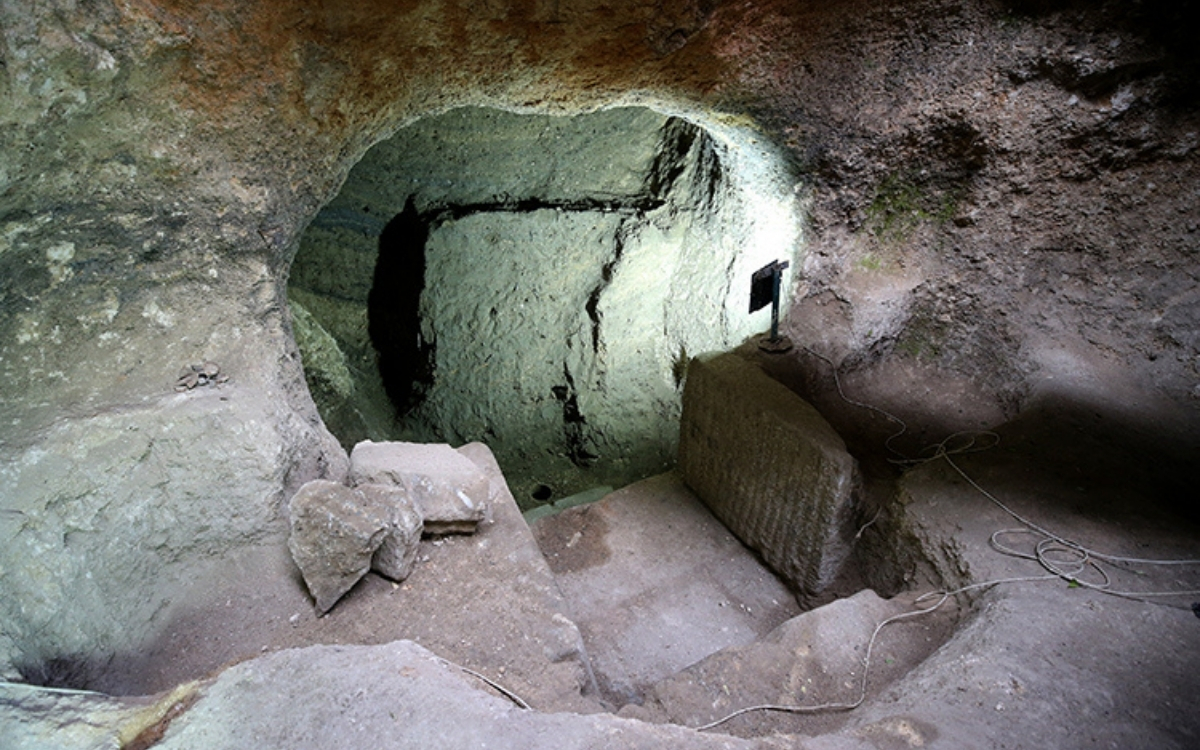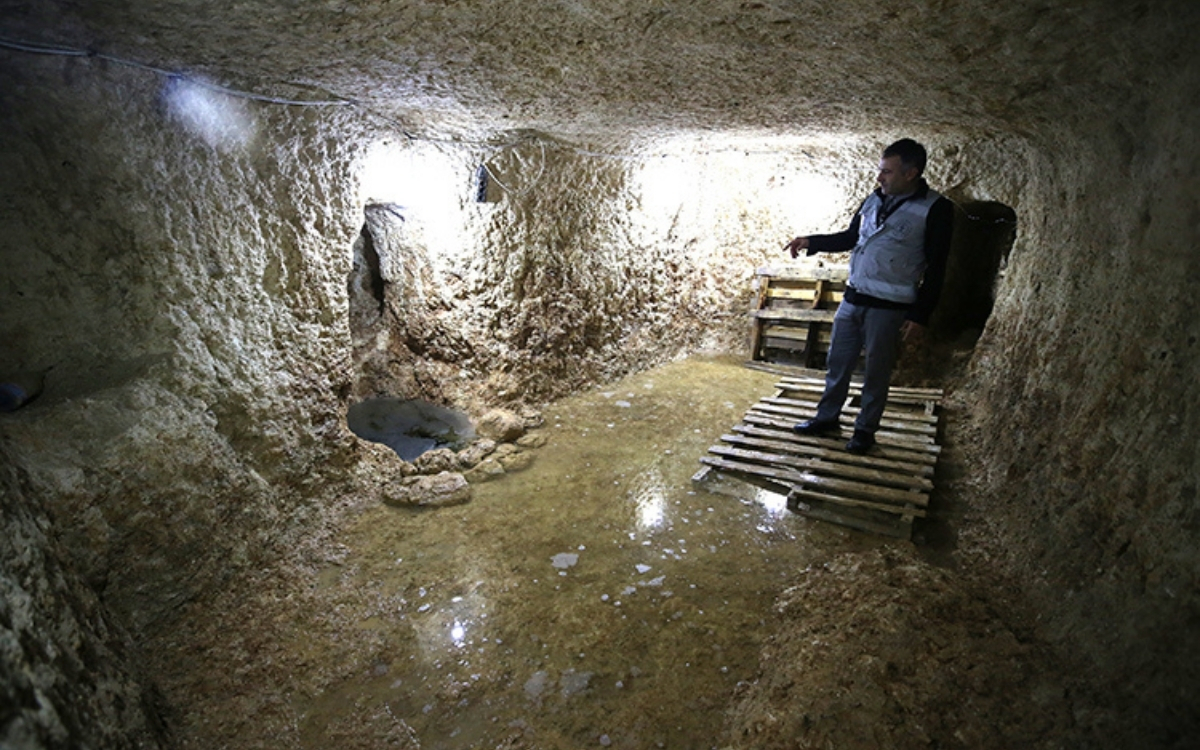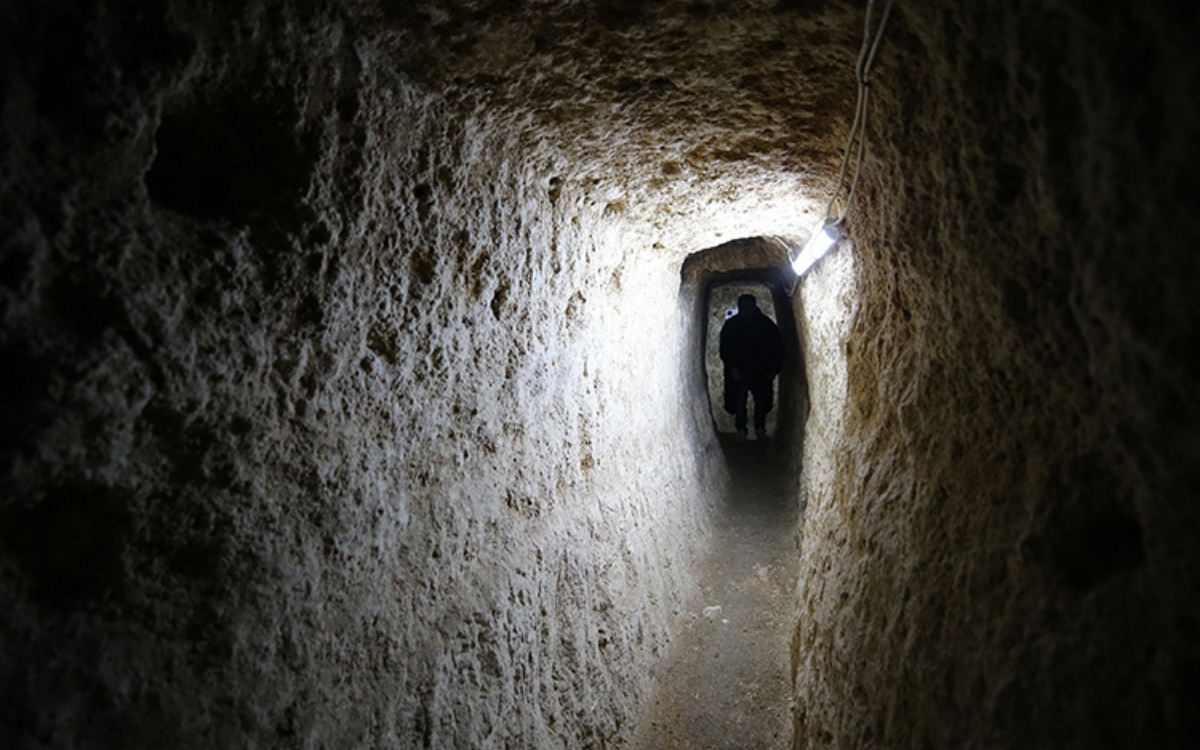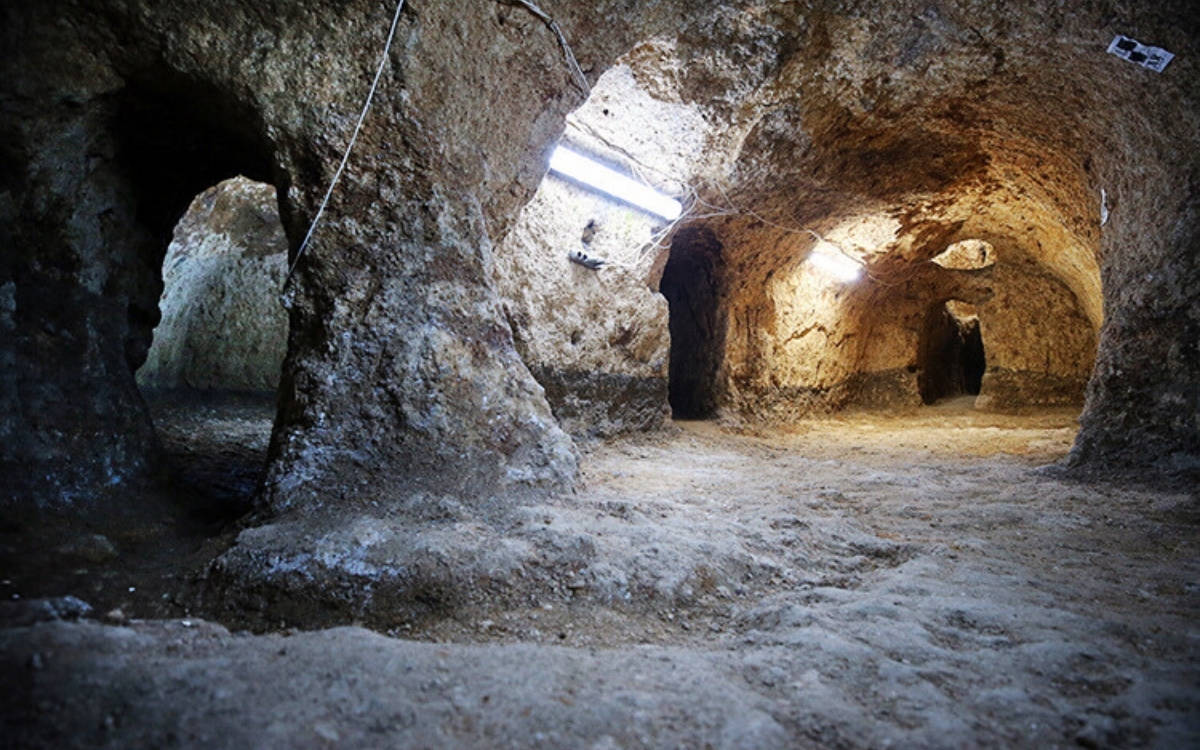In the Sarayönü district of Konya, another underground city has been discovered, connected by tunnels to the "Sarayini" underground city from the Roman period, located one kilometer to its north.
The new underground city was discovered as a result of collaborative efforts between the Ministry of Culture and Tourism and the Sarayönü Municipality and it includes spaces such as a cistern capable of meeting the water needs of approximately 20 thousand people, workshops of various sizes, and a large wine cellar.
Uğuz stated that in the underground city, there are residential spaces, interconnected galleries, room-like living areas, water wells, cisterns, a wine cellar, hearths, workshops, chimneys, lamp locations for lighting, cellars, storage rooms, ventilations, and spaces whose characteristics are yet to be explored.

63 cubic meters of water reserve
Uğuz, emphasizing that they discovered a large cistern while clearing the debris from the collapsed tunnels, and that the cistern is composed of a supply well and three interconnected galleries, remarked:
"The cistern has a width of 63 square meters. In the summer months, about 1 meter 20 centimeters of water accumulates here. In other words, there is a water reserve of 63 cubic meters here. We are calculating how many people can survive in the underground city and for how long without going outside, based on this 63 cubic meters of water reserve.
"With the wells feeding the cistern, there is almost a water source for 20 thousand people. In other words, there is enough water in the cistern to sustain an army. When we analyzed the water, we found that it is of high quality for its period. The method of water coming through filtration from the soil and the storage system ensure this

"We hope to obtain an ancient seed from the grape seeds we found"
Uğuz, mentioning the security mechanisms with round stones for locking in the tunnels leading to the cistern, said that the water source is protected against the risk of poisoning by enemies and to prevent contamination during sieges or crisis periods. He added:
"As we intensified our excavation and cleaning efforts, we determined that the structure we found was a wine cellar. There is a grape crushing place made of marble stones. There is a grooved area where grape juice flows and containers for storage. We found grape seeds and sediments in samples taken from the wine cellar. We will conduct analyses in the coming period.
"We hope to obtain an ancient seed from the grape seeds we found. If we come across a grape variety that grew in these lands a thousand years ago, it will be the culmination of our efforts. The discovery of both the cistern, fortified areas, and the wine cellar indicates that this place has a much broader range of uses than our initial assumptions." (TY/PE)






